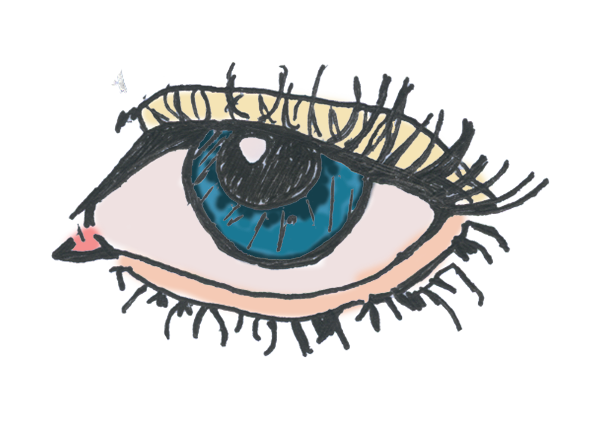Shift in Perspective

The movie theater screen brightens, sultry music commences and a woman emerges into the shot. The camera steadily pans its way up her delicate and curvaceous figure, lingering momentarily on her chest before ultimately revealing her scarlet lips and sparkling eyes. The scene invites the audience to stare hungrily, free from shame, at the image which does not portray the vulnerable actress behind the lens, but rather an on-screen object of desire. This introduction to cinematic female characters is all too familiar and can be observed in a variety of motion pictures. Hence, audiences have become desensitized to this pervasive perspective known as the “male gaze,” which has been a consistent presence in the expression of art for centuries. More recently, however, a belated perspective has begun to make its rightful emergence in the industry—the “female gaze.”
Entertainment often reflects the perspective of the individual behind the camera or canvas as well as the interests of its intended audience. As a result, most works of art produce narratives through the eyes of the male. According to Palo Alto High School AP Art History teacher, Sue La Fetra, this is due to the extensive history of underrepresentation of women in the art industry. “[Historically,] men tended to be in charge of [the majority of the art industry]” she said. “They were in charge of art schools and therefore did not allow women to enroll, they were the art historians so they decided what [art] went into art history textbooks and they were the heads of museums so they decided generally what art was accepted [into the galleries.]” This constant motif male perspective interwoven in various art forms was first analyzed in 1975 by British film theorist, Laura Mulvey, who coined the term “male gaze” to describe the objectification of women in the Western media. “In a world ordered by sexual imbalance, pleasure in looking has been split between active/male and passive/female,” Mulvey wrote in an essay titled “Visual Pleasure and Narrative Cinema”. “The determining male gaze projects its fantasy on to the female form, which is styled accordingly.”
The origin of the male gaze can be dated back to the very first form of media: art. La Fetra presents the male gaze as a historically consistent and easily distinguishable theme in artwork to her AP art history students. “The women that have been historically depicted in art usually have an attitude that reflects them being subservient to the viewer because the assumption is that the viewer is a dominant male,” she said. “Frequently [a female will have] downcast eyes, and the body will be presented in a way that is obviously meant for the pleasure of the male viewer.” La Fetra believes that the acknowledgment of the male gaze has been beneficial for the art world; “it makes us aware of the limitations that women have been put under and therefore makes us more focused on making things more equitable between men and women.”
Not only does the male gaze term imply the sexual depiction of females, but it also pinpoints the overall lack of character development of women in movies, television, and literature. These two-dimensional supporting roles refer to characters whose primary purpose is to aid the storyline of the male protagonist, most often as their “love-interest.” This type of individual is commonly referred to as the “manic pixie dream girl,” (MPDG) a phrase devised by film critic Nathan Rabin after he watched Kirsten Dunst’s character, Claire Colburn, in the movie “Elizabethtown.” Rabin describes the form of the archetype as the “bubbly and shallow cinematic creature that exists solely in the fevered imaginations of sensitive writer-directors.” Furthermore, he maintains that the sole purpose of this character trope is “to teach broodingly soulful young men to embrace life and its infinite mysteries and adventures.”
However, just because a film has a male-lead with a quirky female love-interest does not automatically deem it as a concentration of the “male gaze” or poor screenwriting. The depth of a character and a movie as a whole is ultimately up to the interpretation of the viewer. Nevertheless, some other examples of cinematic characters that are popularly considered as falling into the MPDG character trope are Sam in “Garden State,” played by Natalie Portman, Holly Golightly in “Breakfast at Tiffany’s,” played by Audrey Hepburn and Kim in “The Last Kiss” played by Rachel Bilson.
Although MPDG characters are most frequently female, there is still no shortage of male characters that fit the prototype. Most notably, Ferris Bueller in “Ferris Bueller’s Day Off,” played by Matthew Broderick, is a character whose depth is essentially never revealed to the audience. Instead, his character is centered around his charisma and wildly-entertaining ability to skip school and drag his gloomy best friend, Cameron, and his glamorous girlfriend, Sloane, along for various adventures all around Chicago. The lack of insight into Bueller’s personal life is synonymous with his characters’ mantra: “life moves pretty fast, and if you don’t stop and look around once and a while, you might miss it.” Again, this analysis does not translate directly to whether or not these movies are altogether poorly written. Rather, it serves to solely highlight a pattern of the portrayal of underdeveloped characters in the media.
Only 20 percent of all directors, writers, producers, executive producers, editors and cinematographers working on Hollywood’s top 250 highest-earning projects are female, so it comes as no surprise that the “female gaze” is a rather new term. One might expect the female gaze to objectify men when in reality it’s reflection is far more profound. Instead, the female gaze regularly presents the physical and physiological aspects of the female perspective, which provides the viewer with rich and sincere insight into the complexities of a strong female character.
Through this progressive cinematic depiction of women, audiences view the hardships and trauma females experience on a daily basis and are often provided with a far more extended outlook. For example, instead of presenting an extensive visual depiction of domestic abuse, films shot through the female gaze work to show the emotional aftermath of the traumatic experience. In the Netflix series “Jessica Jones,” the depiction of leading character, Jessica, is unlike the way most female characters are: perfectly kept hair, flawless makeup and consistently walking around in skin-tight clothing. Instead, her regular choice of distressed jeans and a loose-fitting leather jacket play a small role in defining her on-screen persona, as she spends most of her time working as a private investigator and fighting crime in her city. A major plot point in the show is the PTSD she experiences after previously being raped in her life, however, the audience is never presented with a visual depiction of the actual rape scene. Instead, viewers are continually given insight into the devastating and intricate repercussions of the trauma on various aspects of her life. This choice of narrative direction largely embodies the ideology of the female gaze: the presence of a female perspective on-screen to emphasize the story’s emotions and characters. This can be attributed to the show’s female and Emmy nominated screenwriter, Melissa Rosenberg, who in conversation with “Variety”, explains that “[We] have this rich, complex female lead and we are looking at what happened from her perspective.”
Through the use of the female gaze, directors have been able to allocate a voice of greater potency to everyday women who have continually felt underrepresented in media. A true sense of depth and thought is put into the development of female characters, creating an environment where women are seen as more than objects used to further male development. However, the recognition of the male gaze works to bolster the expanding frontier of gender equality in arts. “I think the term male gaze is very beneficial because it makes us aware of the limitations that women have been put under,” La Fetra said. “It makes us more focused on making things more equitable between men and women.”









